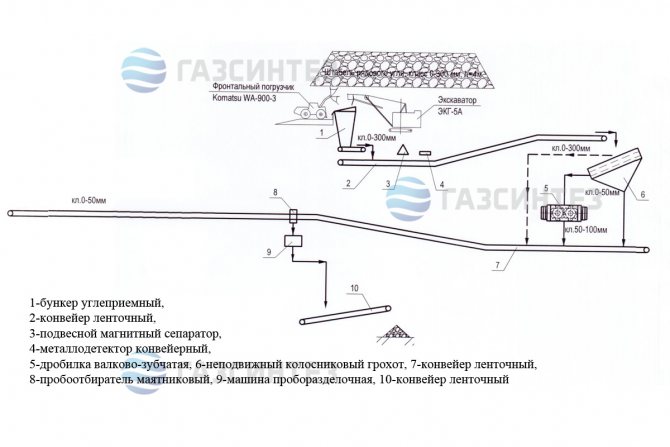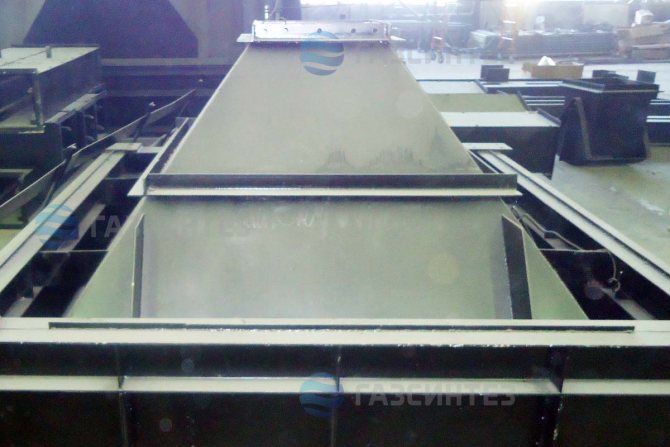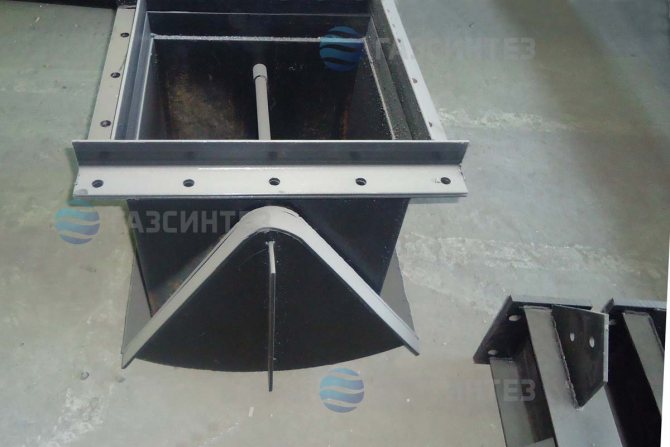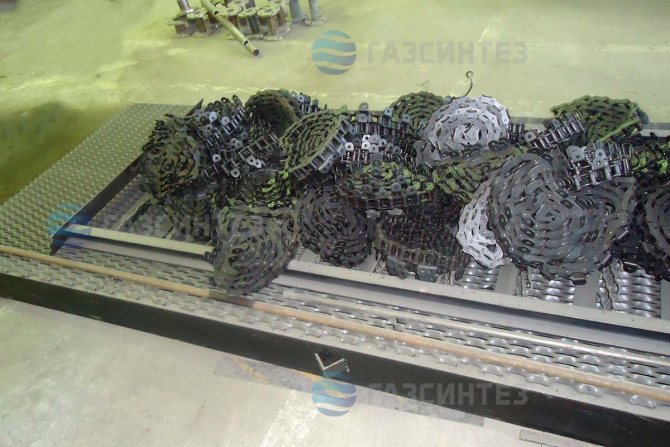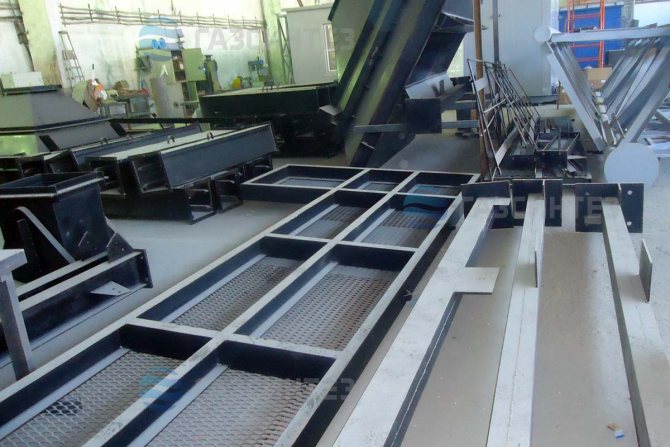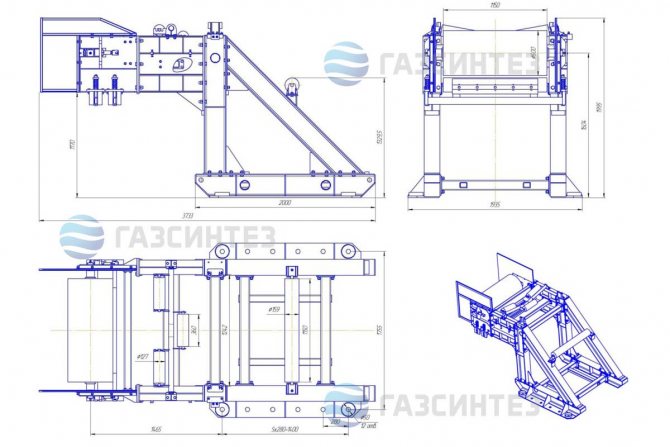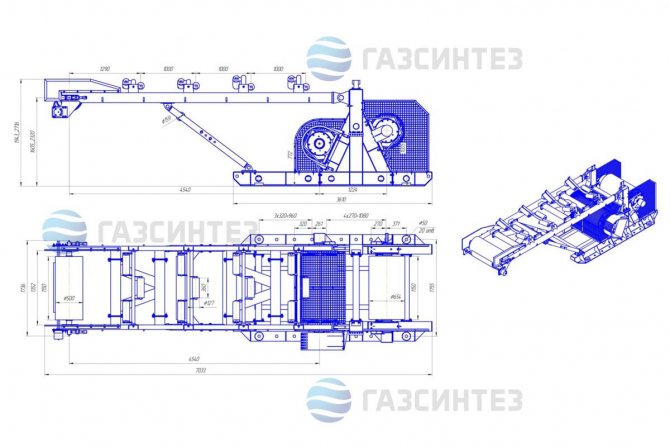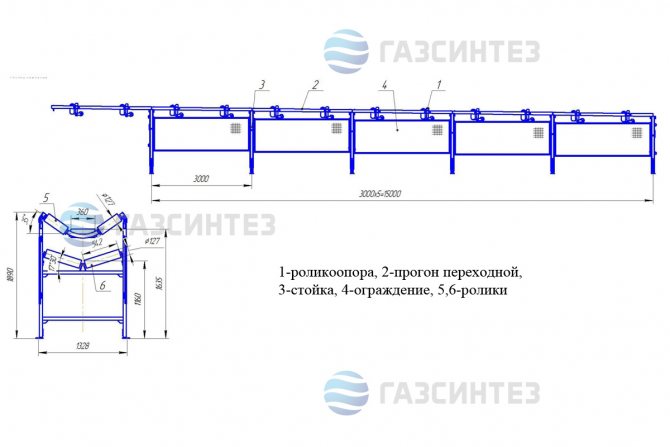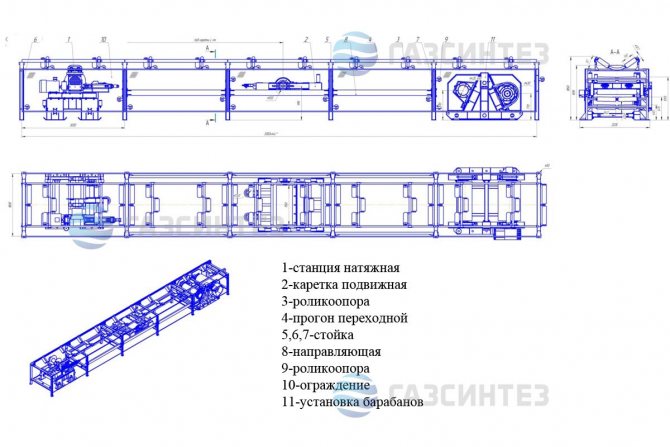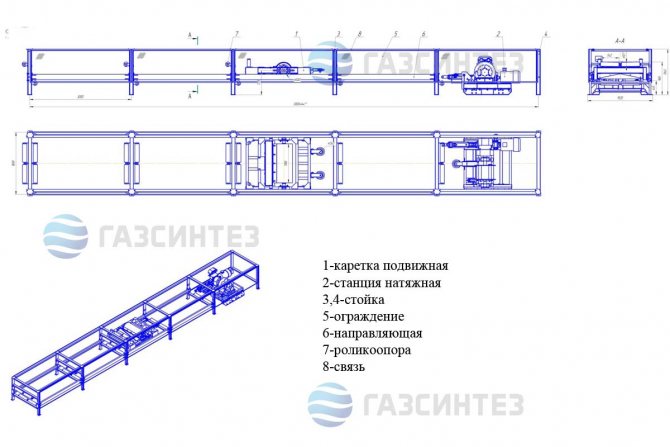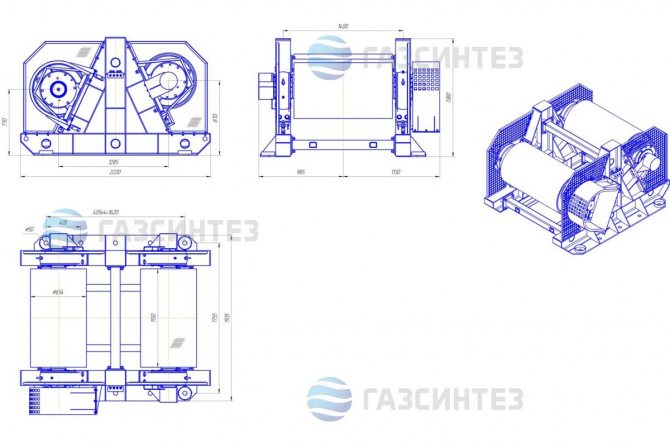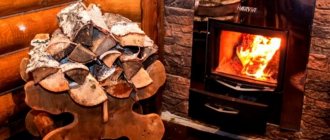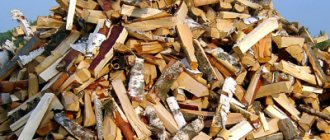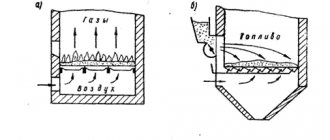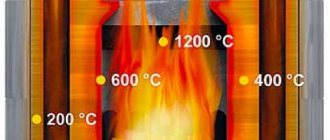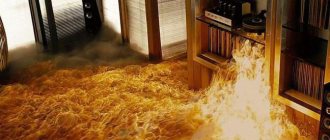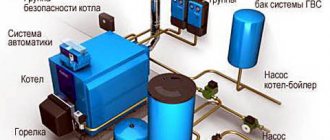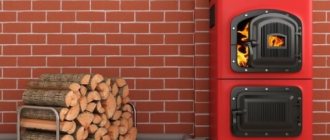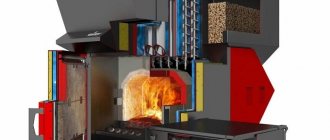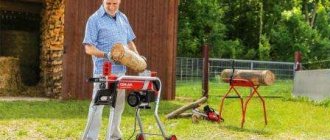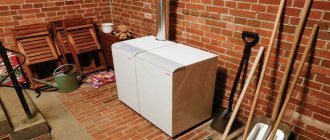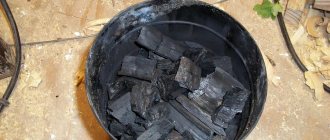Among the extensive family of heat generators that burn various types of biomass, a special place is occupied by solid fuel boilers with automatic fuel supply. They are becoming more and more in demand, since, unlike traditional wood-fired units, they fully satisfy one of the main user requirements - ease of maintenance and operation. In this material, we will review existing boilers with automated loading and figure out what types of solid fuels they can use for their work.
Factory production of coal briquettes
Fine coal fractions and dust are characterized by low density and low specific calorific value. But they can be bought cheaply, and then turned into high-quality fuel by compaction in a limited volume. Simply put, to make pressed coal briquettes, whose density and calorific value are much higher.
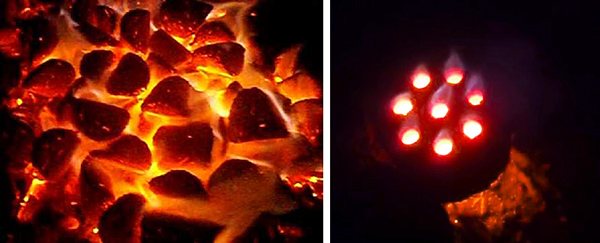
This is how factory (left) and homemade (right) coal briquettes burn
To make such briquettes from fine coal with your own hands, you need to figure out how and with what machines they are stamped at the plant. Equipment for the production of heating briquettes is a technological line consisting of the following installations:
- crusher;
- drying chamber;
- press for briquetting.
Note. Items of equipment are listed in the same order in which they stand according to the technology. The supply of raw materials and its movement between the installations is carried out by means of belt or screw conveyors.
The process of pressing hard coal fuel is as follows:
- In the crusher, small coal is crushed to particles of the same size, depending on the characteristics of the pressing equipment. The maximum permissible size of the fraction is 6 mm.
- In the dryer, the moisture content of the raw material is reduced to 15% (maximum).
- The last stage is pressing, carried out under a pressure of 20 to 120 MPa, depending on the technology used.
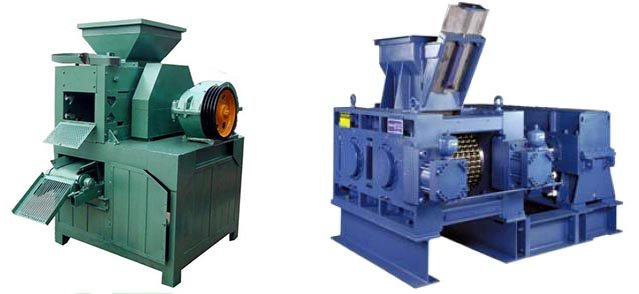

Stamp (roller) presses with a productivity of 10 and 25 tons per hour
Sometimes organic or mineral binders are added to the raw material for the strength of the final product, and before the mixture is compacted, it is heated to a temperature of 250-350 ° C. There are 2 ways to press coal briquettes for heating:
- on stamp (roller) presses;
- by means of extrusion machines.
A stamp press squeezes the heated coal mixture in special forms, developing a force of 100-120 MPa, after which the briquetted coal goes through the cooling and packing process. At the exit, products are obtained in the form of "tablets", "pads", cylinders and bricks with holes.
This method of producing coal briquettes is used for the manufacture of fuel in large quantities and entails considerable financial and energy costs.
Manufacturing by extrusion consists in forcing raw materials with a screw press through a die with calibrated holes. At the exit we have a cylindrical coal briquette in the form of a "sausage". This is a cheaper, but less productive technology for coal briquetting.
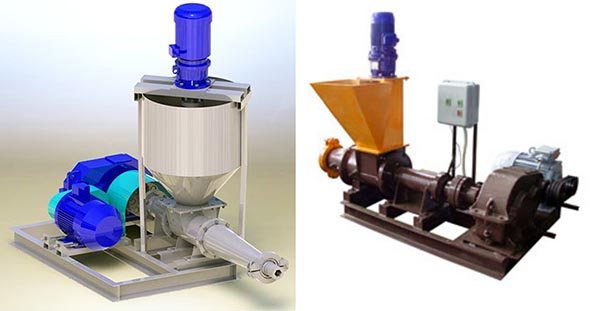

Coal dust extruders
The characteristics of the fuel are influenced by the composition of the initial raw material - brown or bituminous coal, the presence of binders and other factors. But usually the calorific value of the factory briquette is at least 7 kW / kg with a moisture content of 8% and a maximum ash content of 8.5%.
Types of boilers and burners
Boilers with automatic fuel supply run on coal or biomass (pellets, oat grains, sunflower husks, wood chips, etc.).The most popular among coal boilers are those that use eco-pea coal (coal granules with a diameter of 5-25 mm) as fuel.
For fuel combustion in boilers, burners are used: retort, tray or flare. 85% of installed coal-fired boilers with automatic feed work on retort or tray burners - we will consider these solutions.
How can you make coal briquettes with your own hands?
It is impossible to implement industrial technology at home. The reasons are the high price of equipment for the production of coal briquettes, high energy consumption and the need to coordinate their actions with local authorities. But the owner of a private house does not need to develop a grandiose production in order to provide heating for the home. It is enough to make 3-4 tons of coal briquettes, which will be enough for the whole winter.
Pressed coal in briquettes can be obtained in two ways:
- weld a machine for forming a briquette from rolled metal and squeeze out products by hand;
- do it yourself a screw press to briquett coal fines by extrusion.
In either case, it will not be possible to achieve characteristics close to those of factory-made fuel. But you can successfully heat the house by burning homemade briquettes instead of coal dust, which is much more convenient and practical.
Manual pressing
For manual extrusion, a machine for making bricks at home, well known to many craftsmen, is suitable. Its frame is welded from profile pipes and corners 40x40 mm, a receiving hopper is installed on top. A manual mechanism for pressing products in a rectangular shape is attached to the frame. A drawing of a homemade press for manual briquetting of coal is shown in the figure:
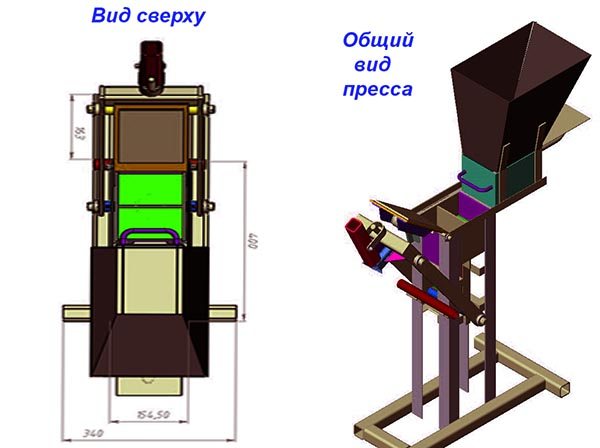

The rectangular shape used for making bricks can be replaced with a cylindrical one, and plugged tubes can be placed inside so that there are through holes in the products. They are needed for better burning of a handmade coal briquette.
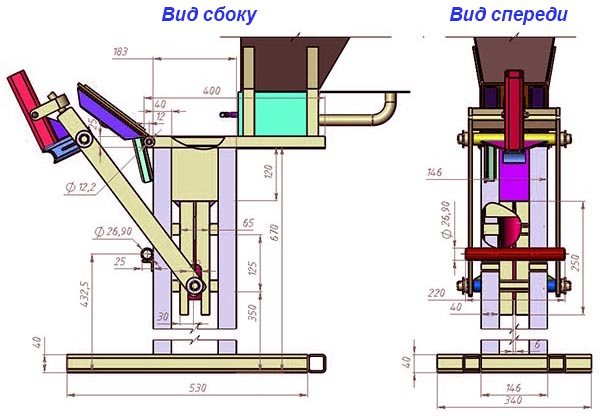

The technology of manual coal briquetting looks like this:
- Raw materials should be tried to grind. The smaller the fraction, the stronger and better the homemade briquette will be.
- Pour in some water and stir to make the mixture stick with your hands. Some do-it-yourselfers add clay as a binder, but this will increase the ash content of the fuel.
- Pour the mixture into the hopper, and from there fill the mold. Squeeze out the briquette by pressing the lever.
- The lever pushes the product out during the reverse stroke. Then it should be removed and placed on a sunny area to dry. Pressing details are shown in the video:
Extruder briquetting
This more productive method will require financial costs for assembling a screw press, consisting of the following elements:
- a body made of a thick-walled steel pipe, machined from the inside to the size of the auger, or made of a solid metal blank on a lathe;
- auger made of high hardness carbon steel;
- a matrix with one or more holes is made from the same steel;
- electric motor with a capacity of at least 4 kW;
- belt drive on multi-ribbed pulleys (at least 3 belts);
- receiving hopper.
Note. Instead of a belt drive, a gear drive can be used, but then the drive will be rigidly connected to the shaft. In the event of any accident, the gearbox or auger may be damaged.
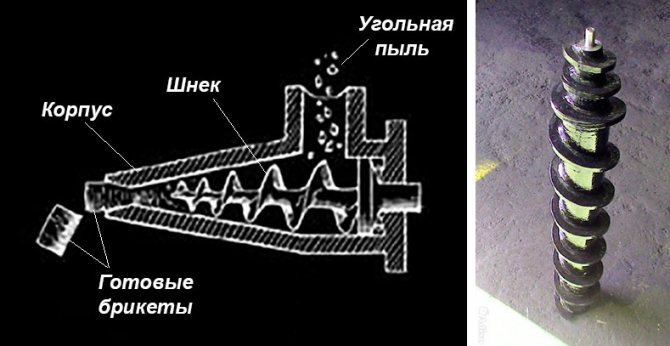

The principle of operation of a briquetting extruder and a homemade screw (right)
The hardest part is to manufacture the body, die and auger. For this, it is better to contact a familiar turner, at the same time he will grind you multi-ribbed pulleys of the required dimensions. Please note: the diameters of the pulleys should be selected so that the rotation speed of the auger does not exceed 200 rpm. The powerful motor of the machine must be grounded and connected to the household power supply through circuit breakers.
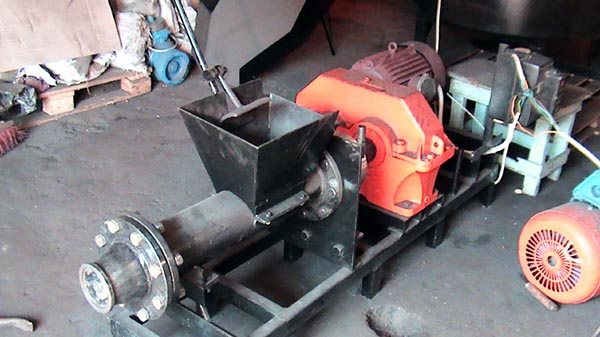

Small homemade extruder
The technology of briquetting on an extruder is quite simple and is implemented in several stages:
- If possible, grind the raw materials and mix with water to a thick consistency.
- Turn on the electric motor of the extruder and use a shovel to load a portion of the coal mixture into the hopper.
- Break off the "sausages" emerging from the holes of the matrix to the desired length and lay out on the rack to dry.
The process of making fuel briquettes from coal is shown in detail in the following video:
Retort burners
Retort burners consist of a cast-iron elbow (retort) and a cast-iron grate burner in which the fuel is burned. Some burners are equipped with a "ring gear", the rotation of which mixes the fuel, breaks down the coking slag and distributes the fuel over the retort tray.
Thanks to the 90-degree elbow, the burner is installed in the middle of the combustion chamber, so the side walls of the boiler are heated evenly and do not overheat. The design increases the path to the fuel hopper and reduces the likelihood of fuel fire in the feeder.
Another advantage is low sensitivity to deposits that arise in the hearth itself: incoming portions of fresh fuel automatically discharge unburned or sintered fuel into the boiler ash pan.
There is also a downside - the bend of the knee complicates the supply and combustion of fuel, which eventually settles at the bend. Sediment and sludge build up, reducing the throat for fuel to travel to the top of the burner. This leads to increased resistance of the auger, premature wear of the auger and breakage of the pin (shear bolt) protecting the auger.
The benefits of coal briquettes - conclusions
If we argue theoretically and take into account the assurances of the manufacturers of coal briquettes, then in terms of calorific value they should win over all other types of solid fuels. After all, only pure anthracite is capable of emitting 7.7-8 kW per 1 kg during combustion. Firewood, pellets and wood briquettes lag far behind in terms of specific heat of combustion, since they emit no more than 5 kW / kg.
But judging by the feedback from users of solid fuel boilers on thematic forums, the demand for briquetted coals is inferior to any types of wood due to the following reasons:
- flare up poorly and give off little heat;
- form a large amount of ash, or even pebbles, repeating the shape of briquettes;
- crumble into dust even during transportation;
- emit an unpleasant odor before and during combustion.
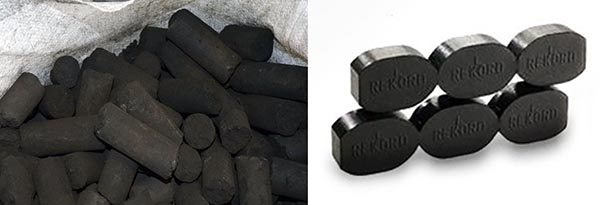

High-quality briquettes (on the right) differ noticeably with their black sheen from lignite fuel, which does not burn very well in heating boilers and stoves.
If we analyze all the reviews about coal briquettes, it turns out that 70% of them are negative. This is primarily due to the fact that fuel producers are trying to make a profit using waste raw materials - sludge, charge and other obscene varieties of bituminous and brown coal. A briquette pressed from anthracite residues is not common.
Hence the conclusion suggests itself: if you want to get good fuel, then use the appropriate raw materials for briquetting with your own hands. When you have only dust and fines of low-calorie coal at your disposal, it is not always advisable to press them. On the other hand, such briquettes can be burned together with firewood, reducing the cost of purchasing them.
Heat flow back to the hopper (fire)
A rare but familiar accident to manufacturers is the return flow of heat to the bunker. In 9 cases out of 10 - the situation arises through an oversight of the boiler user himself. Also, a backflow of heat occurs when the safety pin breaks, after which the auger stops rotating.
If the hopper is tightly closed, the fan works, and nothing prevents the movement of flue gases from the boiler into the chimney, even if the auger does not rotate - there is nothing to fear.
Reverse heat flow (fire) is a rare occurrence in boilers with automatic fuel supply. However, boiler manufacturers equip feed systems with two safety stages in order to exclude such a possibility in principle.
The first stage is a temperature sensor, installed on the fuel supply pipe: if the temperature exceeds the set one, the sensor signals the boiler controller to solve the problem. The controller begins to continuously pump fuel through the pipe until the sensor temperature returns to normal. Continuous feed interval in Galmet boilers is 10 minutes.
If the problem persists, the thermostatic valve is activated - water flows from the emergency reservoir into the pipe and extinguishes the fire in the feeder pipe.
One of the causes of fuel ignition in the tank is backdraft, which occurs if the hopper is left open or closed incorrectly. To prevent this from happening, some manufacturers equip the fuel tank cover with a limit switch. When the lid at the hopper is not closed tightly, the sensor will activate and give a warning signal. If you do not take action, the controller will stop the operation of the boiler.
How to properly store coal and anthracite in order to reduce its losses and not compromise quality
Prepare a storage area before ordering coal. Coal and anthracite can be stored both in warehouses and outdoors.
To reduce the loss of coal, as well as not to compromise its quality, store coal in a barn, box, bunker or outdoors, covered with a film or other covering. Store charcoal on dry or frozen ground.
Coal is a combustible fuel, so follow fire safety precautions and locate it in the safest place. Coal is not afraid of precipitation, but it can freeze. When storing coal outside in the cold season, in order to prevent the coal from freezing, it is necessary to stir it up and pour it over. The characteristics of coal, namely the moisture content, also play a huge role: the less moisture, the more resistant the coal is to freezing. The lowest moisture content is possessed by coal grade A - anthracite
, a little more moisture in the brand
SS - slightly sintered
,
D - long flame
coal has a relatively high moisture content. On the site, all the characteristics are displayed in the certificates of the quality of coal and anthracite, as well as in the "Characteristics" tab for each grade of coal.
Efficiency, ease of use and storage will be ensured by packing coal in bags and big bags. Our
offers packaged coal in laminated, polypropylene bags for
25KG
, polypropylene
50KG
, as well as in big-runs on
850-950kg
... Such packaging will protect the coal from the ingress of debris and dust, ensure cleanliness in the boiler room, the laminated bag will protect against rain, but if the bag is in a puddle, water will leak out, therefore we recommend storing coal under a canopy, in a garage, in a shed.
420 p.up to 40 mesh.
- up to 40 mesh. 610 p.
- 41-100 mesh 590 p.
- 101-800 mesh 580 p.
- from 801 mesh. 550 p.
610 p.up to 40 mesh.
- up to 2 mesh. 14600 RUB
- 3-10 mesh 14300 RUB
- 11-30 mesh 14300 RUB
- from 31 mesh 14300 p.
14600 RUBup to 2 mesh.
Different types of coal require different storage conditions: some coal is picky and can retain its properties for years, and some can become garbage without certain storage conditions. For example, brown coal is stored for a short time - from 4 to 6 months. Other types of coal retain their properties from a year to three months.
Broken pin (shear bolt): causes.
A common reason for stopping the operation of the boiler is breaking the pin (shear bolt) that connects the engine to the auger. Below are the possible reasons for such a breakdown:
- Fuel of not recommended fraction
- Foreign bodies in fuel (bolt, stone, pieces of wire)
- Deposits (carbon deposits) in a retort burner - carbon deposits reduce the diameter of the channel for fuel supply to the burner and increase the resistance of the screw.The problem is easily identified: when carbon deposits are deposited on the elbow of the retort, the “crunchy” sound when fuel is supplied to the burner becomes louder. Once a year, before the start of the heating season, clean the elbow of the fuel feeder to the burner. If the boiler operates on pellets, it is better to repeat the procedure during the season - when using pellets, carbon deposits form faster.
- Damage to the auger. Over time, the screw turns wear out mechanically or are destroyed by the sulfur contained in the fuel. In places of wear, the auger does not move the fuel, but grinds it. Sawdust or charcoal accumulates in the feeder tube, increasing the drag of the auger. The wear rate of the auger depends on the moisture content of the fuel used, the sulfur content in the fuel and the location of the boiler room (in a damp basement and without ventilation, the service life of the equipment is reduced).
- Incorrect installation of the boiler (the adjustable foot of the fuel tank is used to adjust the height and level the boiler feed system).
| IMPORTANT! When transporting the boiler, do not lift the structure by the screw feeder pipe: if the load is not distributed correctly, the pipe is deformed, the geometry of the feed system is disturbed. The result: additional noise when the auger rotates, its premature wear and constant pin breakage. |
"Simple" enrichment
Coal miners use a variety of methods directly for beneficiation. Among them there are quite simple ones: for example, manual sorting, when coal is manually separated from the rock mass, focusing only on its external distinctive features.
Another method is friction enrichment - based on the shape of coal particles and the different values of their friction coefficients. Its essence is as follows: lumps of coal are enriched on an inclined surface. Having a different coefficient of friction, they move with different speeds and trajectories, which allows them to independently separate from each other.

